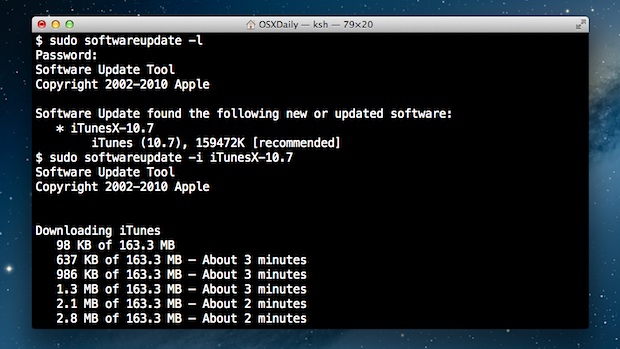

Using the command line softwareupdate tool you can update Mac OS X system software without using the App Store.
This is particularly useful for Mac users running later versions of Mac OS X where the software update system is primarily handled through the Mac App Store, but can occasionally either go awry or be inaccessible in situations of remote administration.
How to Update Mac OS X System Software Without Using the Mac App Store
Get started by launching Terminal, found in /Applications/Utilities/.
To list the available software updates, use the following command.
sudo softwareupdate -l
All available software updates can be installed with the following command:
sudo softwareupdate -i -a
Install specific updates from those listed with the following:
sudo softwareupdate -i PackageName
The softwareupdate command only handles key system software components and updates and will not update third party applications.
Note that general Applications downloaded from the App Store will need to be updated through the Mac App Store and can not be updated through the terminal with this method.
The video tutorial below demonstrates how this works when installing an update to iTunes:
Advanced Mac users know the softwareupdate command has been around for some time, but the new App Store based software updating system has made it more useful than ever before.
This command line approach works with all Mac OS X versions that use the Mac App Store for system software updates, including macOS High Sierra, macOS Sierra, Mac OS X El Capitan, Mac OS X Yosemite, Mac OS X Mavericks, and Mac OS X Mountain Lion. For some history, the Mac App Store started handling system software updates starting from Mac OS X 10.8 through Mac OS X 10.13, and then the process was moved back to the System Preference Software Update control panel in MacOS Mojave 10.14 and Catalina 10.15 onward. The software update command line tool works in all of these versions.
Follow Me:
Top Best Sellers!!





